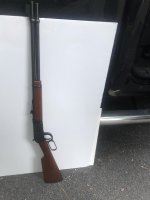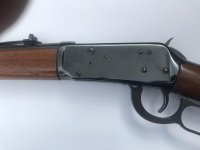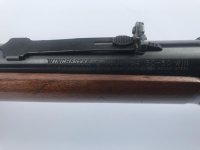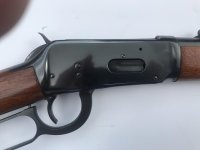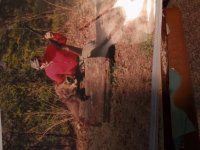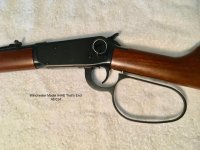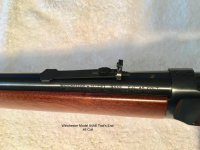I own a number of Model 94s as well as a 20” Model 64 rifle. Here’s my observations:
I have owned 4 pre 64 20” carbines in .30-30 and all of them have been 1.25-1.5 MOA five shot group rifles at 100 yards. That’s with either a tang sight or a receiver sight. The barrel mounted sights just are not up to delivering that kind of accuracy. I still own three of them.
My Model 64 rifle (the 20” version was often referred to as the carbine but it’s a short rifle pattern) delivers the same level of accuracy with a receiver sight.
I own a Model 94 26” rifle made in 1926 and even with a frosted bore it delivers consistent 2 MOA accuracy with its vintage Lyman tang sigh. I suspect when the bore was new it was a 1 MOA rifle, or closer to it. Prior to WWII Model 94 production included a lot of hand fitting thwart was no longer required on post war rifles made on Winchester’s modern state of the art tooling (Winchester acquired that capability making M1s in WWII.
I have a 26” Model 94 Classic made in 1967, and in addition to having very nice finish and wood, it’s a reliable 2 MOA rifle, again with a receiver sight.
One advantage of the 26” rifles is that they deliver an honest 2400 fps velocity rather than the 2260 fps you normally see in a 20” barrel.
I have a pair of Model 94 24” Legendary Frontiersman rifles in .38-55. They are both solid 2 MOA rifles, and are very nicely finished. They are not overly gaudy by commemorative standards and make good field guns given their barrel profile, light weight and superb balance abs handing. They will handle the Buffalo Bore .38-55 “heavy” ammunition (255 gr bullet at 1900 fps. and are in fact the rifle Buffalo bore used to develop the load.
——
I have also owned 3 Model 94 carbines in .30-30, made in the 1970s, all of them preceding the introduction of the rebounding hammer in 1981 followed very shortly by the angle eject. They have consistently been 3-5 MOA carbines, and were noticeably more rattle prone than the pre 64s or the post 1963 commemorative rifles and Classic which all seem to be better fitted.
I sold all of them as they just didn’t deliver the same level of accuracy, but were still minute of deer.
I also acquired and still own a low serial number BB94 in .375 Win. made in 1978. It’s also a solid 2 MOA carbine. It was my go to deer and bear rifle until I discovered the LF in .38-55.
The above accuracy in .30-30 was with either Winchester factory 150 gr soft points or hand loaded Hornady 150 gr soft points. The .38-55 accuracy is with both Buffalo Bore and hand loaded ammunition.
——-
A couple years ago I bought a Miroku made 20” Trails End take down Model 94 rifle in .38-55. It wasn’t inexpensive, and in standard grade it’s not really a looker, but it is a very good shooter with a receiver sight capable of 1.25 MOA so far as I continue load development. With balance similar to the LF but in a shorter take down package it’s likely to become the go to field gun.
I also have an Uberti 1894 26” rifle in .38-55. It’s also a very good shooting rifle at 1.5 MOA. But it’s heavy.
——-
In summary:
1) pre war fit and finish was excellent;
2) Post war fit and finish is still very impressive and 1.5 MOA accuracy is a reasonable expectation;
3) the post 1963 to 1981 rifles have all been 2 MOA capable with good fit and finish, as is my XTR grade BB94 carbine.
4) the Model 94 carbines from 1964-1981 have at least in my experience been less accurate, but still minute of deer and they function just fine, if not quite as solid feeling. They also use the original quarter cock safety operating system, which is not drop safe, but is none the less very popular as the traditional Model 94 operating system. In my opinion they are preferable to the later rebounding hammer and cross bolt safety models.
5) While many consider them to the “Japchesters”, Miroku makes exceptional Model 94 rifles and carbines for FN and offers a lot more configuration and caliber choices than Winchester has done since prior to WWII. I am not a fan at all of the tang mounted safety as it precludes practical use of a tang sight. But they are drilled and tapped for a receiver sight, as have been all Model 94s since 1952 and all Model 64s since 1936.

